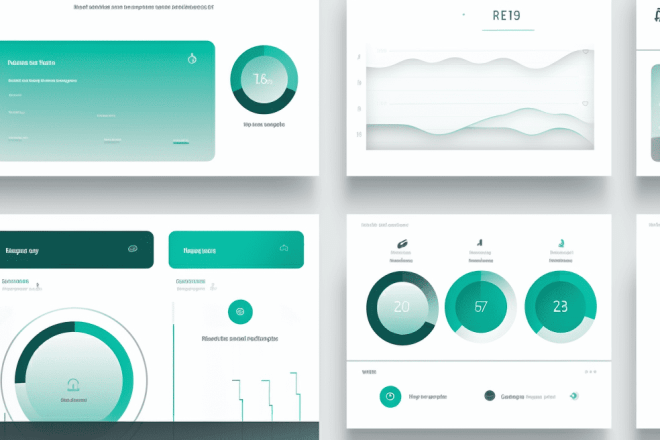Figuring out what works to drive traffic to your site and convert visitors into customers is a bit like learning a new language. A/B testing, also called split testing, is one of the best ways of figuring out what works and what doesn’t on your website.
A/B testing is a tool that provides highly personalized insight into how your site visitors respond. Whenever you make a change or addition to your site, conduct split testing and see if the shift converts higher. If you aren’t sure which of two choices works better, such as CTA button color or placement on a page, run a split test. Look at specific elements or an entire page and see how each converts.
What A/B Testing Offers for Designers
Though your design needs aesthetic beauty, the usability of your site makes the difference in how site visitors interact with your brand. A/B testing provides an opportunity for testing navigation structure and other specific elements on the page.
In one case study of ClickMechanic, they looked at 16 issues preventing users from converting into customers and based a new design on customer feedback. Using remote UX testing resulted in a 50 percent increase in conversions.
If you’re a freelance designer, split testing gives your designs that “wow” factor. Tweak little things until you reach a design that converts for your clients at levels they’ve never before seen.
How to Use Split Testing
One of the challenges of A/B testing is the ideal way of conducting a test. In a perfect world, you should look at one element at a time. However, you must wait for thousands of visits to each version so you can compare which converts best. Testing each item is time-consuming and slows down the design process.
If the overall goal is higher conversions, making multiple changes and comparing the two versions of the page side by side is much faster than testing a single element at a time. Even if you choose to examine each aspect across several tests, the process is much more complicated than merely collecting stats.
Don’t fall into the trap of assuming what works for someone else’s page will be successful for yours. You’ll find dozens upon dozens of blog posts claiming a particular color or placement converts best. However, each site has a specific audience — what succeeds for one may not work for another. You must conduct testing for each website you design, while understanding the results sometimes change over time.
Why Testing Is Vital to the Industry
Design work changes from year to year as new technology advances and designers’ attention shifts more from the heavy-duty coding of years past into the creative and management realm. Testing provides troubleshooting for designers and goes where artificial intelligence can’t.
An example is a page that looks beautiful on the surface and functions properly, but loses visitors a few seconds after they land on the page. Armed with the purpose to test for “stickiness,” the designer tries different changes aimed at improving the landing page to keep visitors on the site. Split testing shows if those changes are sufficient, or whether the page still needs additional tweaks.
Around 74 percent of consumers state they want a website’s content personalized to their needs. Split testing provides an opportunity for personalization targeted at a specific segment of site visitors.
Types of Page Testing
There are several ways of testing your website pages and seeing which version accomplishes your goals.
- A/B testing: Compares two different versions and how they perform. Traditionally, split testing compares one element at a time. Keep the number of variables low for the most reliable results.
- Multivariate testing (MVP): MVP compares multiple of elements at once and works well for in-depth changes to a website. For example, if you change the structure of your headlines and move your CTA button, test a page with both changes against the old version of the page and see if the adjustments help the page perform better.
- Multi-page testing: If you have a sales funnel, you might need to tweak the pages that lead the user through your funnel. Multi-page testing compares the different impact of each set of pages. Similar to other types of testing, it’s best to limit the number of changes, so the results tie into specific elements.
All three of these types of tests are similar and relate to the structure of your site and how many changes you’re making at a given time.
Free Testing Options
Although there aren’t many free testing tools for A/B testing, there are a few features available if you’re on a minimal budget.
- Google Analytics combined with Google Optimize allows simple split testing for general performance data.
- Five-Second Tests offers data on images. If you only need to figure out how one specific element performs, this free resource provides a basic option.
- Visual Website Optimizer offers a 30-day free trial, so you can test their powerful split testing model. After the trial is up, plans start with the most basic testing and scale up from there with additional features.
You can also compare changes via your internal numbers, but that is a lot more labor-intensive and cumbersome than finding a free or inexpensive tool that automates the process.
Paid Testing Options
Paid testing options give you access to additional features, such as reports on how best to further optimize your pages.
- Unbounce lets users build, test and optimize web pages from a single platform, saving you time and effort. They offer a 30-day free trial and prices starting at $79 per month for the basic package with up to 75 trackable landing pages, plus popups and sticky bars.
- Adobe Target offers the ability for omni-channel personalization and provides A/B and MVP testing. Cost of the program varies, but starts at just under $30 for an individual user.
- Optimizely provides experiments for digital experiences. Plans include A/B testing, visual editor, multi-page experimentation and analytics integrations. Pricing is customized based on your company’s needs.
As your company grows, investing in testing options results in higher conversions and stronger growth patterns for your brand.
Testing Is Vital
A/B testing is vital if you want business growth month after month. Armed with the data behind the design, you can tweak and adjust your landing pages until they get the desired results. If you aren’t conducting some variation of split testing, you’re missing out on opportunities for capturing leads from those who land on your website.
Gain insight into the behaviors and preferences of your site visitors. The changes you make today will work well and the changes you make tomorrow will work even better.
About The Author
Eleanor Hecks is the Editor-in-Chief of Designerly Magazine, an online publication dedicated to providing in-depth content from the design and marketing industries. When she's not designing or writing code, you can find her re-reading the Harry Potter series, burning calories at a local Zumba class, or hanging out with her dogs, Bear and Lucy.



If you want to keep a regular check up on your business growth, then A/B testing is vital. I was able to prove it when I gained insights into the behaviors and preferences of your site visitors with the help of Aritic PinPoint since it allowed me to run multiple A/B tests on landing pages, content, email campaigns to ensure the maximum results.